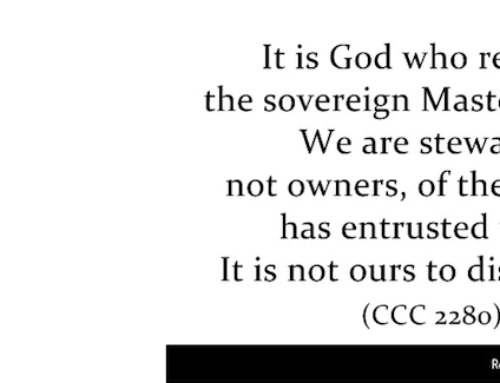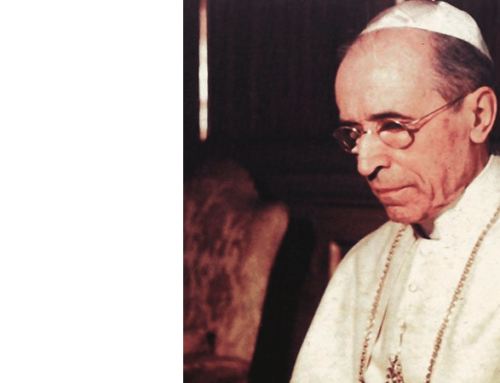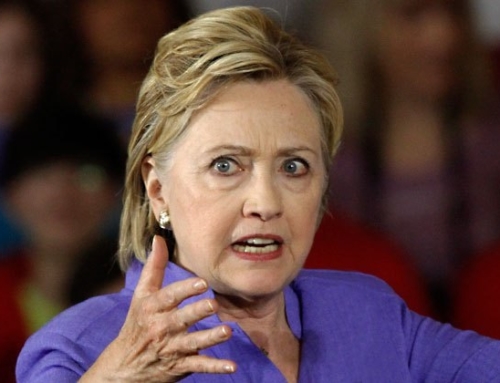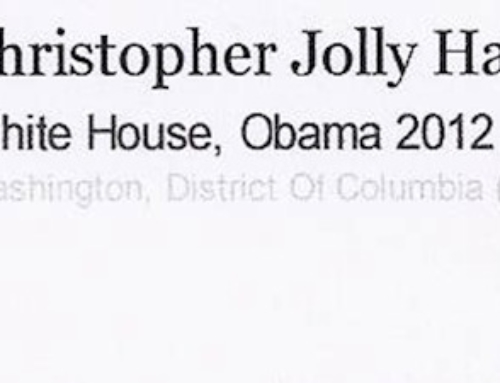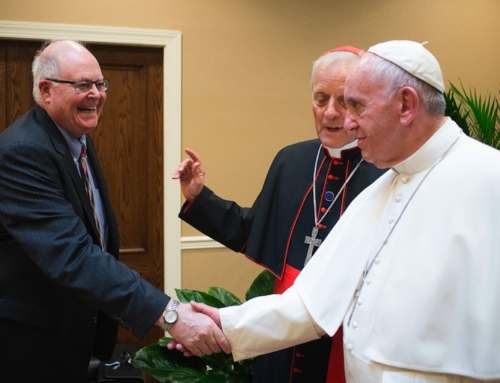by Robert P. Lockwood
(2/2000)
The debate over the use of public funds to assist in the education of Catholic schoolchildren has a long – and sometimes violent – history in the United States. While Catholics themselves have been divided on the necessity of such assistance and where it might lead, the issue itself has been a flash point for public, legislative and judicial anti-Catholicism for over 150 years.
While many assume prohibition of aid to Catholic schools or voucher programs to Catholic school parents to be a question of constitutional interpretation of the First Amendment Establishment Clause, the history of Catholic school funding questions is essentially rooted in America’s unhappy history of anti-Catholicism. Unfortunately, that anti-Catholic heritage has become entrenched in judicial interpretations and public policy. The point of this report is not to argue whether specific proposals for vouchers, tuition assistance, or direct aid to Catholic schools are good – or bad – public policy. However, it is the point that forbidding aid to Catholic school children or to the parents of Catholic school children is, no matter how such actions might be interpreted, a remnant of 19th century anti-Catholic and anti-immigrant prejudices.
Catholic schools began in the United States as a reaction against a growing publicly-funded school system that was essentially Protestant. In 1839, the American Bible Society announced its intention to make certain that the Bible was read in every classroom in America.1 There was no disagreement in a country that was essentially Protestant. It was widely – virtually universally – held that education without a religious foundation in the Bible was no education at all. As Horace Mann of Massachusetts, the so-called “father” of the public school system wrote, “Our system earnestly inculcates all Christian morals. It welcomes the religion of the Bible; and in receiving the Bible, it allows it to do what is allowed by no other system – to speak for itself.”2
The Bible – specifically the King James Version – was seen in Protestant America as a universal document that stood above doctrinal divisions within Protestantism. Therefore, use of Scripture in public schools would be viewed as “non-sectarian,” meaning that interpretation of the Bible would not be prejudiced toward a specific Protestant denomination. The public schools would not be Presbyterian or Congregationalist. However, use of the King James translation of the Bible accepted by all Protestants – and with underlying Protestant assumptions – would be the foundation of the public school system.
This became a key understanding in establishing very early in the history of American public schools the definition of “sectarian.” Today, when the word “sectarian” is used in a political or judicial environment, the connotation is religion in general. “Sectarian” would not have that meaning in the 19th century and in the development of the public school system and the laws – as well as the judicial interpretation – that derived from it. In that development, the word sectarian did not refer to a general Protestant outlook. It would mean, in the beginning, sects within Protestantism. Very quickly, however, sectarian would be narrowed to take on a more specific definition as the debate over public school funding began: Catholic.
The New York City Common Schools3
The evolution of the debate over school funding into an anti-Catholic movement was established in the battle over the “common schools” in New York City that began in 1840. The New York City schools at that time were funded by the state through the Public School Society. The Public School Society was “a benevolent association formed in 1805 to care for the instruction of children unable to attend religious or private schools.” A primary goal of the Society was “to inculcate the sublime truths of religion and morality contained in Holy Scriptures” and to assure that Bible exercises were included in the schools it controlled.4
By 1840, the Public School Society dominated the New York City schools by controlling the allocation of the common school fund allocated from the state of New York. Ascribing to its definition of “sectarian,” the Public School Society funded schools that were generically “Christian.” These were “common” schools sharing in the “common” understanding of Protestant Christianity, rather than those operated by a specific Protestant congregation. The Public School Society would not fund schools sponsored by churches explaining, that “if religion be taught in a school, it strips it of one of the characteristics of a common school…no school can be common unless all the parents of all religious sects…can send their children to it…without doing violence to their religious beliefs.” Yet, the difficulty was that the schools they did fund were and had to be generically Protestant. It was accepted as a matter of fundamental pedagogy that a general Protestant understanding of Scripture and devotional life within the schools was central to the curriculum and to normal education. As such, the schools were subtle – and not very subtle – tools for evangelizing the growing Irish Catholic immigrant population to Protestantism.
Within the common schools in New York City – and elsewhere – daily scripture readings from the King James Version of the Bible were required. Prayers, songs and general religious instruction at odds with Catholic belief were the norm. Anti-Catholic sentiments extended throughout the curriculum with references to deceitful Catholics, murderous inquisitions, vile popery, Church corruption, conniving Jesuits and the pope as the anti-Christ of Revelation common place.5 In the face of such bigotry within the common schools, Catholic parishes had begun to develop their own Catholic schools in response. By 1840 in New York City, approximately 5,000 children attended eight Catholic schools. But at least 12,000 more Catholic children either attended no school, or were enrolled in the common schools where their faith was insulted daily.6
The firestorm began when William H. Seward, the newly elected governor of the state addressed the issue in a legislative message delivered in January, 1840. He recommended the “establishment of schools in which (immigrants) may be instructed by teachers speaking the same language with themselves and professing the same faith.”7 In response, Catholic schools in New York City petitioned the common council for a share of the state school fund distributed through the Public School Society. The Society answered with a message that resonates with today’s rhetoric. It argued that by funding Catholic schools, money would be dissipated and that “sectarian” Catholic education would replace the common schools. The common council agreed and the Catholic petition was denied.
It was then that Bishop John Hughes of New York stepped into the picture. “Dagger John” as he was aptly called had been named coadjutor bishop under the ailing John DuBois in 1838 and he would formally succeed to the See in 1842. But by 1840, Bishop Hughes was in command and would take a far more confrontational approach to the question of school funding than his predecessor.8 Blasting the Public School Society for corrupting Catholic children, Hughes submitted a renewed petition demanding Catholics be given a portion of the state funds for schooling. “The petition was answered by both the Public School Society and the Methodist churches of New York, the trustees of the society insisting once more that their teachings were non-sectarian and the Methodist clergy using the excuse to attack the Catholic version of Scripture as upholding the murder of heretics and an unqualified submission to papal authority.”9 In response, the Common Council scheduled a debate on the issue for late October, 1840. At the debate, Hughes represented the Catholic schools and spoke for three hours. The Protestant response covered two days and dealt primarily in anti-Catholic vitriol rather than the issues at hand. “Catholics were represented as irreligious idol worshippers, bent on the murder of all Protestants and the subjugation of all democracies. ‘I do say,’ one minister told the sympathetic galleries, ‘that if the fearful dilemma were forced upon me of becoming an infidel or a Roman catholic, according to the entire system of popery, with all its idolatry, superstition, and violent opposition to the Holy Bible, I would rather be an infidel than a papist.’”10
The parameters of the debate were set and would be adhered to virtually to our own day. On the one hand, Catholics had been forced to set up their own schools because of the overwhelmingly Protestant nature of the public school system. As a result, they wanted a share of the public funding set aside for the general education of children. On the other hand, the public school system viewed itself as the only educational instrument for the “common” culture of America, a culture in the 19th century that was decidedly Protestant. The tools of argument in either case would be to employ anti-Catholic rhetoric and to equate “sectarian” with the Catholic schools.
In January 1841, the Catholic position was rejected overwhelmingly by the common council. Catholics had been put into a difficult position. In the public mind, Catholics appeared to be opposed to reading the Bible, rather than reading the King James Version with its decidedly anti-Catholic slant. It was an incomprehensible position to the 19th century Protestant mind and reinforced two centuries of anti-Catholic prejudice. “They demand of Republicans to give them funds to train up their children to worship a ghostly monarch of vicars, bishops, archbishops, cardinals, and Popes! They demand of us to take away our children’s funds and bestow them on subjects of Rome, the creatures of a foreign hierarchy!”11 This would echo the lament 150 years later in an Indiana daily newspaper over the voucher issue with an editor complaining that his taxes would be used “to teach papal infallibility.”12
Bishop Hughes continued to press the issue and with the support of Governor Seward (after a demonstration of Catholic strength at the voting booth) a bill was passed in the state legislature in 1842 which effectively ended the Public School Society’s monopoly on New York City public education. Riots ensued and the home of Bishop Hughes would be stoned. Yet it was a phyrric victory for Bishop Hughes. Even under the new legislation, control of the public schools effectively remained in Protestant hands through the school boards. When protests were made that reading of the Bible be prohibited as “sectarian,” a new board of education dominated by Protestants responded that the King James Bible was simply not a sectarian book. Reading of the King James Version of the Bible would continue in those schools where Catholics did not hold political power; and Catholic schools would continue to be denied funding as sectarian institutions.
While rocks were thrown, violence was minimal in New York. Such was not the case in Philadelphia. In 1843, Bishop Francis Patrick Kenrick of Philadelphia asked the local school committee to excuse Catholic students from reading the King James Version and from daily Protestant exercises. When the school committee allowed Catholic students in the common schools to be allowed to read their own translation of the Bible, nativists claimed that this was merely the first step to an outright ban on Bible reading in the schools. With a growing anti-Irish sentiment already strong in the city, the dispute erupted in a violent series of riots in 1844 that saw the bishop flee the city, 13 people killed and five Catholic churches burned to the ground.13
The Know Nothings and the Development of Blaine Amendments
“As the Catholic population in the United States grew, ‘sectarian’ took on an even more precise, and more pejorative, meaning. In response to the waves of Catholic immigration in the 19th century, Nativist groups such as the anti-immigrant Know Nothing Party grew in size and political power. These groups sought to insure the ascendancy of their view of the common religion of the United States in the common schools and keep out ‘sectarian’ competition, enacting measures such as requiring the reading of the King James Bible in public schools, and enacting measures barring any public funds to sectarian schools.”14
The popular appeal of the Know Nothing Party prior to the Civil War was based on a growing anti-immigrant and anti-Catholic sentiment, fueled in no small part by the public school question. Catholics were considered illiterate and ignorant Irish immigrants. They were viewed as bible-burners eager to rob the public till to pass on their superstitious beliefs to a new generation. The Know Nothing Party combined nativism, anti-Catholicism, temperance and anti-slavery into a potent political force that would dominate in Northern state houses in the late 1850s. The remnant of the movement after the Civil War would coalesce in the Republican party and promote legislative attacks on Catholic schools that remained in force for a long time.15
As the Know Nothings gained power, they took particular aim at Catholic schools. In the 1854 elections in Massachusetts, they secured complete dominance in both houses and won the governor’s office. “The Know Nothings adopted an amendment to the Massachusetts Constitution barring any part of the common school fund to be ‘appropriated to any religious sect for the maintenance exclusively of its own school.’ The amendment’s proponents were open about their motives: ‘Sir, I want all our children of our Catholic and Protestant population, to be educated together in our public schools. And if gentlemen say that the resolution has a strong leaning towards Catholics, and is intended to have special reference to them, I am not disposed to deny that it admits of such interpretation. I am ready to say to our fellow Catholic citizens: You may come here and meet us on the broad principles of civil and religious liberty, but if you cannot meet us upon this common ground, we do not ask you to come.’”16
“As one might expect with an organization created to decrease the political influence of immigrants and Catholics, Know Nothing office holders devoted the bulk of their energies to the implementation of their nativist agenda. And because Know Nothings believed that the surest method for guaranteeing the supremacy of Protestant values in America lay in promoting Protestantism in the public schools, educational matters occupied a significant portion of their legislative agenda. Addressing Catholic attempts to end the use of the Protestant King James Bible in schools, Massachusetts Know Nothing lawmakers enacted a law requiring students to read that version of the Scripture every day. That legislature also approved an amendment to the state constitution that barred the use of state funds in sectarian schools. This, Know Nothings hoped, would make parochial schools financially unfeasible, forcing the children of Catholics to learn ‘American’ customs in the public schools.”17 One curious aspect of the Know Nothing legislation in Massachusetts was that it prohibited racial discrimination. Though laudable, “blacks were Protestant and native-born and posed no threat to the predominant Protestant curriculum that Know Nothings found so important.”18
In their anti-Catholic zeal, the Know Nothings of Massachusetts also passed a “nunnery inspection” law that included Catholic schools. Committees were to investigate certain unnamed “practices” allegedly taking place within these Catholic institutions, a common enough belief based on decades of popular anti-Catholic literature boldly proclaiming immoral activity and “white slavery” conditions in convents. “The so-called Nunnery Committee undertook three special investigations – one at Holy Cross College in Worcester, another in a school run by the Sisters of Notre Dame in Lowell, and a third at a school in Roxbury operated by nuns of the same order. The investigation at Roxbury was particularly offensive, as some two dozen men suddenly appeared at the school, announced they were on state business, and proceeded to tramp through the building. They poked into closets, searched cellars, intimidated nuns, frightened the children—and found nothing incriminating.”19 When newspapers protested, the Committee responded that surprise visits were necessary because “priests imprisoned young nuns in convents against their will.”20
In the era after the Civil War, anti-Catholic fervor over the school question coalesced in the movement to legislate so-called Blaine amendments into state constitutions. It would be these amendments that codified the nativist identification of “sectarian” with Catholic. These amendments would not be applied to Protestant religious activities in public schools.
President Ulysses S. Grant (1868-1876) was well known for his Know Nothing sympathies and had belonged to the party prior to the Civil War. His vice presidents, Schulyer Colfax and Henry Wilson, had been leading members of the Know Nothings.21 In 1875, President Grant called for a Constitutional amendment that would mandate free public schools and prohibit the use of public money for sectarian schools. (An interesting proposal in that it assumed that the Constitution as written would not ban the use of public funds for sectarian schools.) It was clear that Grant’s concern was rooted in his anti-Catholicism, fearing a future with “patriotism and intelligence on one side and superstition, ambition and greed on the other” which he identified with the Catholic Church. Grant called for public schools “unmixed with atheistic, pagan or sectarian teaching.”22 The assumption would be that these free public schools would be Protestant in nature and that no public funds would be used for sectarian – Catholic – schools.
Senator James G. Blaine of Maine had proposed such an amendment to the Constitution in 1874. It read, in part: “No money raised by taxation in any State for the support of public schools, or derived from any public source, nor any public lands devoted thereto, shall ever be under the control of any religious sect, nor shall any money so raised or land so devoted be divided between religious sects or denominations.”23
The amendment was defeated in 1875 but would be the model incorporated into 34 state constitutions over the next three decades. They have come down to us today. “Thirty-one states presently have Blaine amendments, or amendments derived from the Blaine formula, in their constitutions forbidding state aid to Catholic schools.”24 These “Blaine amendments” are clearly illegal under the Federal constitution. Drafted on the basis of anti-Catholic prejudice, they are aimed at a single class of citizens. The “protestant paranoia fueled by waves of Catholic immigration to the U.S. beginning in the mid-nineteenth century, cannot form the basis of a stable constitutional principle. And the stability of the principle has been undermined by the amelioration of those concerns. From the advent of publicly supported, compulsory education until very recently, aid to sectarian schools primarily meant aid to Catholic schools as an enterprise to rival publicly supported, essentially Protestant schools.”25
Historian David O’Brien concluded that with the Blaine amendments to state constitutions, “the outcome of the great Bible war, then, was forecast in the New York fight four decades earlier: the secularization of public education and the ban on aid to church-sponsored schools.”26 But the reality in the 19th century and virtually the first half of the twentieth century was far different. As noted above, the New York battle did not end Bible reading or Protestant services in public schools in New York City. Long after states adopted Blaine Amendments – well into the 20th century – public schools routinely conducted such services and identified themselves by a generically Christian environment. They would only begin to become secularized, and then only in urban America, in the 1930s with the influx of the new professional public educators inculcated with the teaching philosophy of John Dewey. Even at that point, the impetus for such secularization came from the teaching community and not through judicial or legislative mandate.
Blaine Amendments themselves were squarely aimed at Catholic schools and never interpreted to apply to public schools that were viewed as legitimately Protestant and reflecting that “Protestant hegemony.” “Court decisions of the late 19th and early 20th century demonstrate well the targets of Blaine Amendments. They routinely held that the prohibition on funding ‘sectarian’ schools did not prohibit funding public schools that were religious, only schools with religions that conflicted with the common Protestant hegemony. As one court observed, ‘It is said that the King James Bible is proscribed by Roman Catholic authority; but proscription cannot make that sectarian which is not actually so.”27 That ruling was by a Colorado court in 1927. In a 1903 Nebraska court ruling it was stated that state constitutional prohibition against sectarian instruction “cannot, under any canon of construction which we are acquainted, be held to mean that neither the Bible, nor any part of it, from Genesis to Revelation, may be read in the educational institutions fostered by the state.”28
In general, the Courts paid little attention to Catholic schools themselves. As long as the Church was not attempting to secure the use of public funds, the schools were left alone by the judiciary. However, in 1922 the state of Oregon, under Ku Klux Klan pressure, passed a law requiring that all children between the ages of eight and sixteen attend the public schools. The law was challenged by the nuns who operated Catholic schools in Oregon. The case ultimately made it to the Supreme Court. It declared the law unconstitutional. If nothing else, it guaranteed that at least Catholic schools were allowed to exist as it affirmed “the liberty of parents and guardians to direct the upbringing and education of children under their control.”29 In 1949, Father William McManus appeared before the House Committee on Education and argued that “every school to which parents may send their children in compliance with the compulsory education laws of the State is entitled to a fair share of the tax funds.” He stated that in accordance with the 1925 decision in Oregon, parental rights of choice in education had to be both respected and protected.30
After World War II Catholics had once again begun to seek public aid for schools while, concurrently, the public schools themselves began the movement from essentially Protestant entities to secular institutions. The secularization of public schools in the second half of the 20th century is not germane to this report except to note that this was not simply a result of mandates from the courts. For well over a century, courts had routinely ruled in favor of the generally Protestant nature of the free public school system and assumed that the meaning of “sectarian” referred specifically to Catholic schools. The secularization of public schools was far more a result of new educational theories and the judicial activism of later courts.
In the post-war years, the Supreme Court began to move aggressively to apply the Establishment Clause to issues of school funding and to base their findings on the “sectarian” nature of the entities involved. In Everson v. Board of Education in 1947, the Court upheld the constitutionality of a New Jersey law allowing free school bus transportation for parochial school students. Yet the Everson decision was critical. “For the first time, the Supreme Court read into the due process clause of the Fourteenth Amendment the First Amendment’s non-establishment clause.” While the busing statute was upheld because the primary beneficiary was the children, opinions “in the case set the direction for the future.”31 In applying the Establishment Clause, the Court moved quickly to complete the secularization of public schools so enamored by the new class of professional educators. At the same time, the “sectarian” – or Catholic – nature of a private institution was the determining factor in rejecting any public aid, even when such aid was directed to the children or the parents.
Following the Everson precedent in 1971, the Supreme Court addressed the issue of aid to Catholic schools – or Catholic educators, parents and children – as a violation of the establishment clause. The Court used the notion of “sectarian” from legislation drafted in a period of virulent anti-Catholicism and applied it directly to the issue. In a series of rulings on the issue, the Supreme Court would go so far as to reference essentially nativist, anti-Catholic material in defining the pervasively sectarian nature of Catholic schools. In Lemon vs. Kurtzman, where the court struck down state legislation permitting supplementary salary payments to parochial school teachers, Justice William Douglas quoted Loraine Boettner’s Roman Catholicism, a virulently anti-Catholic book. (Among quotes in Boettner’s book: “The lesson of history is that Romanism means the loss of religious liberty and the arrest of national progress.”) Justice Douglas’ concurrence in Lemon vs. Kurtzman reads like a Know Nothing commentary: “In the parochial schools Roman Catholic indoctrination is included in every subject. History, literature, geography, civics and science are given a Roman Catholic slant. The whole education of the child is filled with propaganda. That, of course, is the very purpose of such schools…That purpose is not so much to educate, but to indoctrinate and train, not to teach Scripture truths (emphasis added) and Americanism, but to make loyal Roman Catholics.”31 Justice Douglas was essentially making the same arguments as the Public School Society of New York in the 19th century.32
Following these 1971 decisions, courts utilized the nearly farcical procedure of focusing questions of public aid through the prism of the visible sectarian nature of the Catholic institution in question. Crucifixes on walls, mission statements involving faith, even trophies from Catholic sports leagues publicly displayed became part of judicial evidence. In December, 1999, Judge Solomon Oliver, Jr. declared a four-year-old voucher test in Cleveland, Ohio unconstitutional. He called the program “government-supported religious indoctrination” because of the 56 schools involved in the program, many are Catholic. He cited in his ruling that a mission statement in one Catholic school involved the objective to “communicate the gospel message of Jesus.” Another school asked students to “contribute a nominal amount for membership in the Society for the Propagation of the faith.”33
As noted in the 1999 amicus curiae brief to the Supreme Court by the Becket Fund for Religious Liberty, the “origins of the inquiry into a school’s ‘sectarian’ character are found not in the history of the establishment clause, but in a dark period in our history when bigotry against immigrants – particularly Catholic immigrants – was a powerful force in state legislatures. To policy-makers in the mid-19th century, ‘sectarian’ did not mean the same thing as ‘religious.’ It was instead an epithet applied to those who did not share the ‘common’ religion taught in the publicly funded common schools.” “Sectarian” meant Catholic and, as the amicus curiae brief concludes, “It is an unhelpful analytical category and an epithet with a reprehensible past.”34
SUMMARY POINTS
- The history of Catholic school funding questions is essentially rooted in America’s unhappy history of anti-Catholicism
- Catholic schools began in the United States as a reaction against a growing publicly-funded school system that was essentially Protestant
- The King James version of the Bible was viewed as a universal document that stood above doctrinal divisions within Protestantism and could not be considered “sectarian”
- The term “sectarian” referred initially to sects within Protestantism
- Sectarian would be narrowed to refer to Catholics
- “Common schools,” the forerunner of the public schools, were meant to provide a “common” understanding shared by Protestant Christianity
- A general Protestant understanding of Scripture and devotional life within the schools was central to the curriculum in the “common schools”
- Anti-Catholic sentiments extended throughout the curriculum of the “common schools”
- Catholic schools were refused funding because they were defined as “sectarian”
- As Catholics had been forced to set up their own schools because of the overwhelmingly Protestant nature of the common school system, they requested a fair share of the public funding set aside for education
- The public school system viewed itself as the only educational institution for the “common culture” which was defined as Protestant
- Public funding of Catholic schools was attacked primarily through anti-Catholic rhetoric and by defining Catholic schools as “sectarian”
- The Know Nothing Party enacted legislation that would guarantee the supremacy of Protestant values in the public schools and deny funding to Catholic schools in order to make them financially unfeasible
- After the Civil War, anti-Catholic sentiment coalesced in the movement to legislate so-called Blaine amendments within the states. Within three decades, 34 states had passed Blaine amendments to their constitutions
- Blaine amendments codified the nativist identification of “sectarian” with Catholic
- Blaine amendments would not be applied to Protestant religious activities in public schools
- Blaine amendments are clearly illegal under the Federal constitution as they were drafted on the basis of anti-Catholic prejudice and aimed at a specific class of citizens
- Aid to sectarian schools primarily meant aid to Catholic schools as an enterprise to rival publicly-supported, essentially Protestant schools
- Court decisions of the late 19th and early 20th century clearly demonstrate that Catholic schools were the target of Blaine amendments and public schools were expected to be part of the Protestant hegemony
- When the Supreme Court began to apply the Establishment Clause to the issue of public aid to Catholic schools, it utilized the notion of sectarian derived from legislation drafted in a period of virulent anti-Catholicism
- The origins of the inquiry into a school’s “sectarian” character are found not in the history of the Establishment Clause, but in a dark period in our history when bigotry against Catholic immigrants was a powerful force in state legislatures
- “Sectarian” is an unhelpful analytical category and an epithet with a reprehensible past
FOOTNOTES
1Ray Allen Billington, The Protestant Crusade 1800-1860, a study of the origins of American nativism (Quadrangle Books, 1964) p.143
2David O’Brien, Public Catholicism (Macmillan Publishing Company, 1989). Cited on p. 44
3The most detailed discussion of the controversy over the New York City Common Schools is in Billington’s The Protestant Crusade. Direct quotes from primary sources in this discussion of the New York City controversy are from citations in The Protestant Crusade.
4 Billington, p. 143.
5 Billington, p. 144-145.
6 O’Brien, p. 45.
7 William H. Seward, Works. Cited in Billington.
8 Richard Shaw, John DuBois: Founding Father (U.S. Catholic Historical Society, 1983), pp. 165-173.
9 Billington, p. 147
10 American Protestant Vindicator, November 11, 1840. Cited in Billington.
11 Ibid, August 5, 140. Cited in Billington.
12 The Journal Gazette, Fort Wayne, IN
13 O’Brien, p. 47
14 Amicus Curiae brief in Guy Mitchell, et al v. Mary L. Helms in the Supreme Court of the United States (No. 98-1648). Brief of the Becket Fund for Religious Liberty as amicus curiae in support of petitioners, p. 3. Citations following will be identified as Becket Fund.
15 Tyler Anbinder, Nativism and Slavery, The Northern Know Nothings & the Politics of the 1850s (Oxford University Press, 1992) pp. 246-278.
16 Cited in Becket Fund, p. 10
17 Anbinder, p. 136
18 Ibid, p. 136
19 Thomas H. O’Connor, Boston Catholics, A History of a Church and Its People(Northeastern University Press, 1998) p. 96
20 Anbinder, p. 137
21 Ibid, p. 274-275
22 O’Brien, p. 106
23 O’Brien, p. 106
24 Robert P. Lockwood (ed.) Anti-Catholicism in American Culture (Our Sunday Visitor, 2000) p. 35
25 Lupu, The Increasingly Anachronistic Case Against School Vouchers, 13 Notre Dame J. of Law, Ethics & Pub. Pol. 375, 386 (1999). Cited in Becket Fund.
26 O’Brien, p. 107
27 Becket Fund, p. 4
28 Ibid, p. 4
29 See Documents of American Catholic History, John Tracy Ellis (Macmillan, 1956) pp. 635-638.
30James Hennesey, S.J., American Catholics, A History of the Roman Catholic Community in the United States (Oxford University Press, 1981) p. 297
31 Ibid, p. 299
31 Mark J. Hurley, The Unholy Ghost, Anti-Catholicism in the American Experience(Our Sunday Visitor, 1992) p 187.
32For an excellent analysis of the current state of school voucher and funding questions see Joseph P. Viteritti, Choosing Equality, School Choice, the Constitution and Civil Society (Brookings Institute Press, Washington D.C.)
33 Columbus Enquirer, “Vouchers unconstitutional, judge rules,” by Michael Hawthorne. December 21, 1999
34 Becket Fund, p. 23




